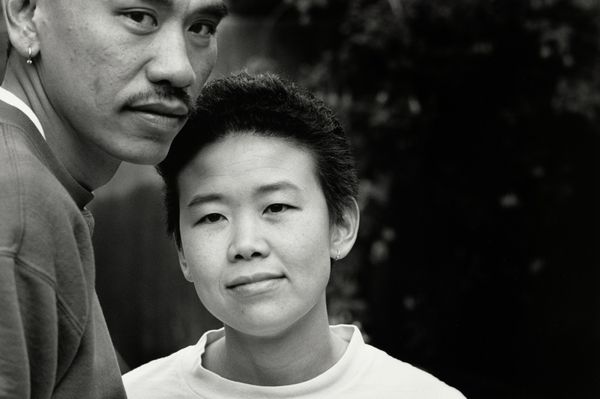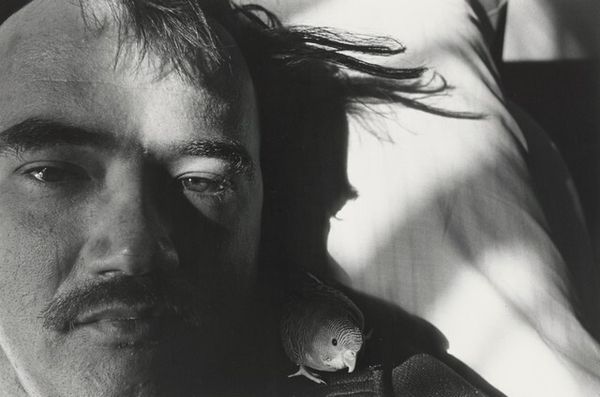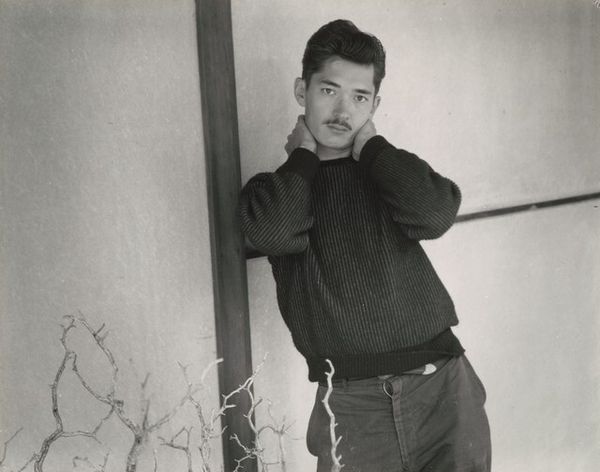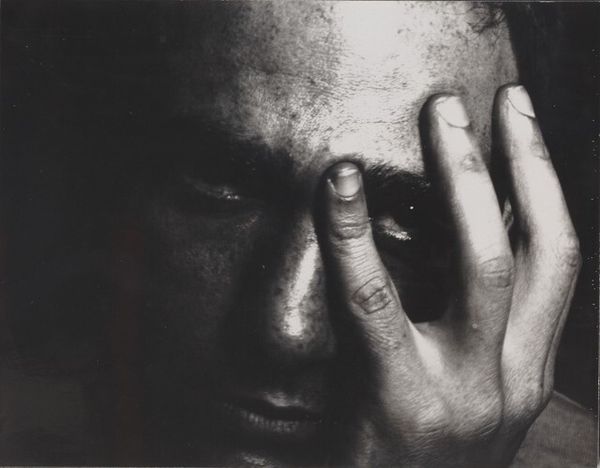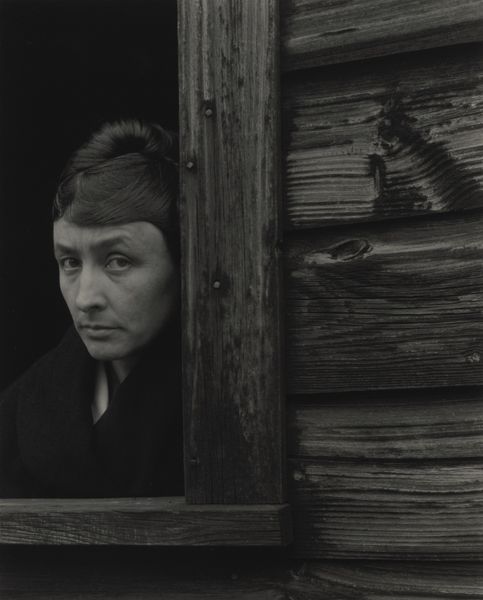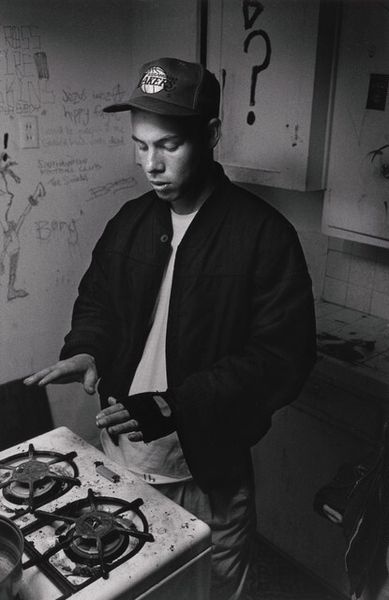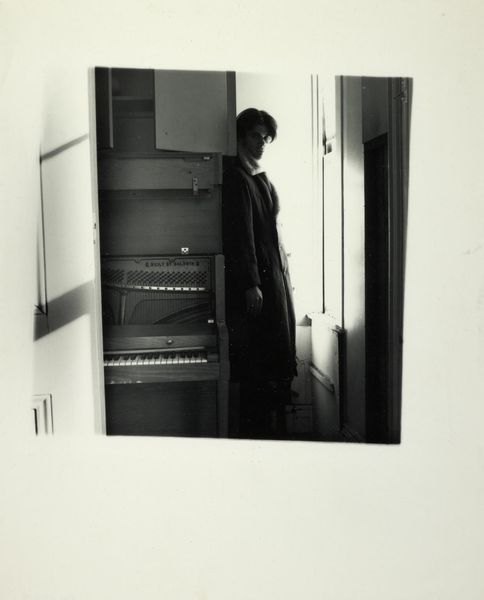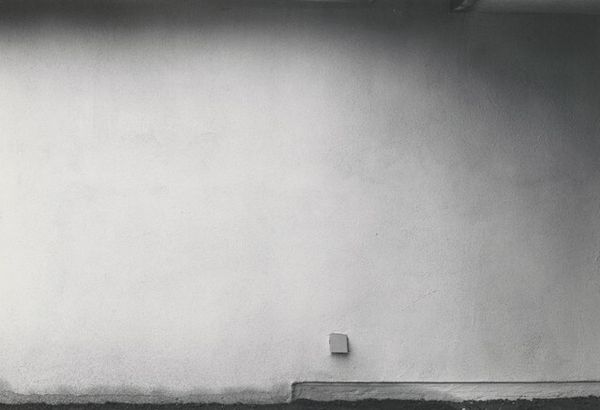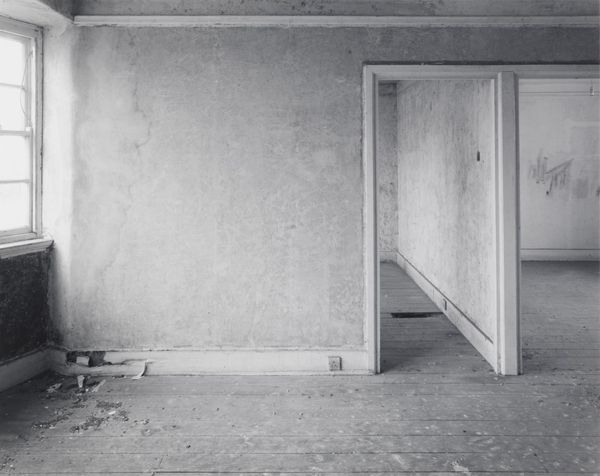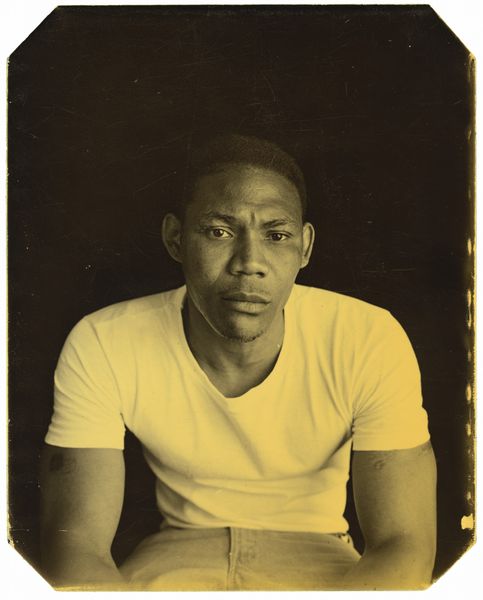
photography, gelatin-silver-print
#
portrait
#
self-portrait
#
black and white photography
#
photography
#
gelatin-silver-print
#
monochrome photography
#
monochrome
#
modernism
#
monochrome
Dimensions: image: 32 × 45.7 cm (12 5/8 × 18 in.) sheet: 40.3 × 50.8 cm (15 7/8 × 20 in.)
Copyright: National Gallery of Art: CC0 1.0
Curator: This gelatin-silver print is entitled "Steve Takemura." It's a photograph from 1993 by Nancy Andrews. Editor: My first impression is one of quiet contemplation. The monochrome palette really draws attention to the subtle play of light and shadow on the wall. There’s a geometric, almost architectural feel contrasting with the softness of the human figure. Curator: Andrews was deeply invested in representing identity and community through her work. The photo itself can be considered a self-portrait, given Andrews is both subject and object. There are questions to be asked of how identity is curated by the creator for external presentation, how does Andrews wish to portray Takemura as standing in her shadow? Editor: That shadow presence definitely speaks volumes, you see his distinct outline against the wall. We also have that striking window shape dominating the background – suggesting clarity and opportunity. Is this about visibility or a struggle against obscurity? Curator: One can not help but look for the institutional history in Andrews' work, here one could ponder if she and Takemura engaged with broader debates around visibility and representation. This work speaks to those tensions directly, I would posit. Andrews as authorial in choice, light, location and staging. Editor: And those shadows introduce a kind of psychic doubling. Is the window frame also meant to act as some kind of symbolic container, that restricts even as it provides insight? Curator: Those are wonderful suggestions for viewers. I’d add, perhaps, it speaks to how these works function within institutions that are exclusionary? Andrews highlights her peers who would otherwise not be considered in dominant cultural institutions, there’s also a dialogue with modernism and minimalist geometric styles here. Editor: Absolutely. That geometrical abstraction becomes another symbolic layer that you notice upon a more prolonged, considered look. Considering both subject and light, what cultural meaning can we extrapolate? Curator: I see the interplay of social commentary and symbolic depth in the portrait to be speaking directly about artistic intervention into established orders and traditions. A vital contribution to discourses surrounding visibility. Editor: Yes, thinking of the shadow and light motif, in particular, it definitely gives the image a depth, I shall reflect more.
Comments
No comments
Be the first to comment and join the conversation on the ultimate creative platform.
